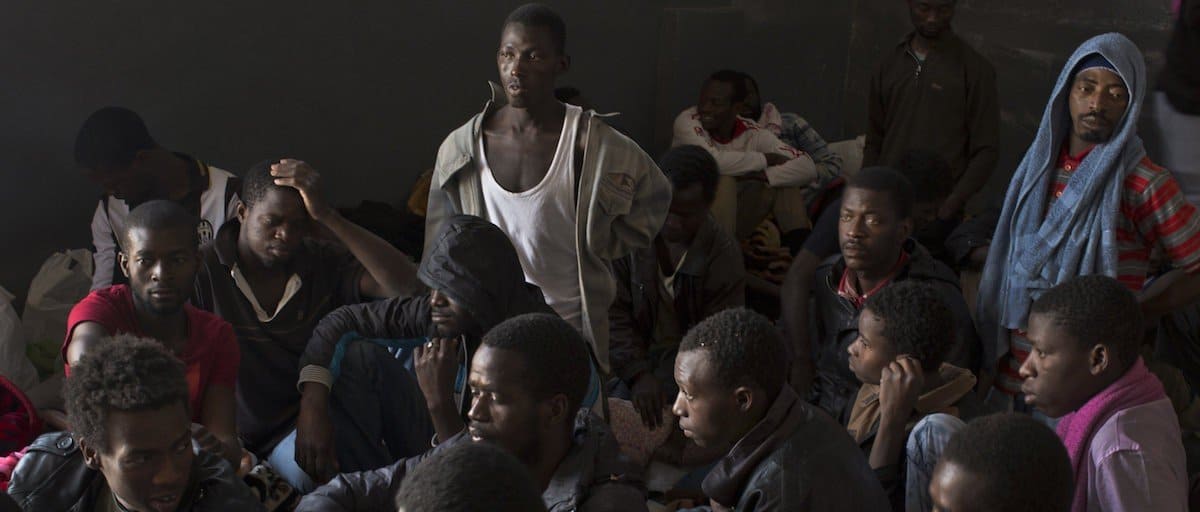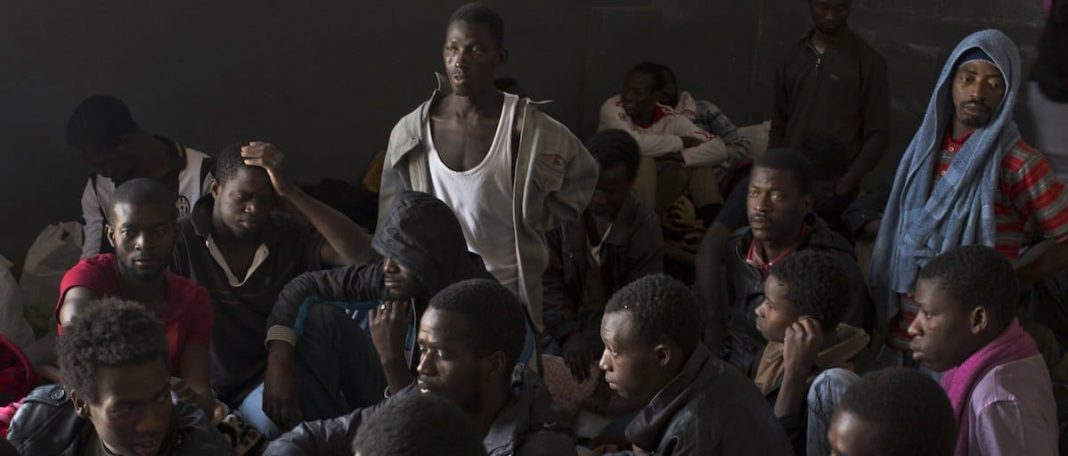
Human Trafficking is still a big threat. The coronavirus has not been a significant deterrent for Human trafficking supply-chains. Conflicts, terrorism and lack of opportunities present a vacuum for criminal organisations to exploit, while law-enforcement counter-measures remain fragile.
Why Does This Matter?
Refugee and immigration flow at the height of the Syrian conflict reached the media and social spotlight. In 2020, with terrorist-related conflicts across the Sahel and the arrival of the pandemic, immigration and refugee flows continue to enter Europe with changes in their point of origin. Drawing focus to the business model of human trafficking supply-chains shows the fragility of counter-measures employed and the determination of smugglers to increase profitability:
- Trafficking organisations in North Africa and smugglers almost certainly treat individuals as commodities. The low-cost in smuggling over the Mediterranean has likely caused networks to maximise profitability and lower travel conditions for refugees, creating an informal human-trafficking supply-chain service model.
- The economic attractiveness of human trafficking likely increases recruitment, simultaneously increasing demand for individual access to European territory. An uncontrolled increase in the supply and demand of immigrant trafficking is likely to contribute to the normalisation of the occupation. This will highly likely increase competition amongst the trafficking business, leading to a further drop in humanitarian conditions.
- Human trafficking networks have almost certainly adapted to law-enforcement and security deterrence efforts. Networks exploit humanitarian efforts by NGO’s and governments to continue with trafficking while reducing the resources invested in assuring a safe passage.
- Avoiding accountability and maintaining a less visible role directs public responsibility to political governance, conflicts and victims themselves. This highly likely increases polarisation as well as the narrative rejecting immigration flows. This way, traffickers likely deter long-term political solutions and have an opportunity to adapt to short-term policies which governments may adopt.
Human Trafficking: Why Is This Important?
If you can smuggle drugs and weapons, a large influx of refugees fleeing from conflicts become economic commodities to traffic with due to their little independence and control. The presence of illicit trade and porous borders across the Sahel draws terrorist organisations and international traffickers to exploit the environment, obtain profit and in return fuel the long-term presence of irregular business. With corridors exploited by different types of actors, a transformation to a human trafficking supply-chain model is likely normalised as a common irregular and informal economy.
Immigration from North Africa to Southern Europe has decreased steadily since 2017 but has adopted changes particularly in points of destination. With the Balkan and the Eastern Mediterranean routes represented in their majority by Syrian refugees, Central and Western Mediterranean routes attract the majority of North African and Sahel migrants seeking to enter Europe. According to FRONTEX, western routes to the Canary Islands increased exponentially in November due to regional conflict, while there was a 155% increase in the use of the central Mediterranean route from 2019 to 2020. The 13% drop in illegal crossings to Europe in 2020 is explained by the pandemic and likely does not represent a decrease in the demand to flee conflict-riddled areas. The rise in conflict likely inclines towards the opposite conclusion; migration, whether illegal or legal, will highly likely increase in the long term future. Consequently, a human trafficking supply-chain model becomes a long-term strategic adaptation in addition to being an adaptive behaviour to law-enforcement efforts.
Methodology
Instead of large trafficking networks responsible and in control of the entire trafficking journey, smugglers operate like private contractors, offering a transport service through borders towards North Africa, whether its Morocco, Tunisia or Libya. This way, immigrants trafficked to Europe are not homogeneous. Smugglers have the capability to exploit from individuals in need to escape conflict-riddled areas to sex-exploitation trafficking networks seeking to traffic women to Europe.
While points of origin wildly vary, both routes and transport methodology follow similar patterns. Drivers are employed to take convoys through border crossings, particularly exploiting the porous borders along Northern Niger to enter Tunisia, Libya or Algeria en-route to Morocco. Cost of travel is not fixated either; while traffickers may charge up to €4,000 to arrange journeys, each smuggler in charge of specific regions will demand cash payments reaching to €500 euros, abandoning individuals who cannot afford to finance the journey. Departure points along the coast function similarly, with payments demanded without assurance of reaching the destination. Smugglers and traffickers have reportedly exploited humanitarian actions by private NGO’s and EU governments, passively forcing governments to cooperate with trafficking networks as victims of trafficking are rescued.
The treatment of individuals as commodities to be trafficked with likely incentivises the frequency and number of people trafficked in each journey. According to Global Initiative, accommodation and liaising with authorities are behaviours barely seen by individual smugglers. An idea of a human trafficking supply-chain enables networks to favour quantity over quality, as compartmentalisation provides high-profit with reduced risk. It is likely that trafficking networks currently give little importance to reputation considering the almost certain demand of individuals seeking to reach Europe.
Demand & Border Externalisation
While human trafficking has multiple drivers like insecurity, employment prospects or criminal extortion, it is almost certain that demand to travel to Europe within the Sahel and North Africa is likely to continue to rise given conflicts in Mali, Burkina Faso or recently Ethiopia. The conflict in Western Sahara likely prompted 8,150 irregular migrants to reach the Canary Islands, compared to 517 in 2019. Conflicts in Mali, Burkina Faso, Libya and Ethiopia have likely prompted the increase in the central Mediterranean route.
Evidence in Ethiopia in 2019 showed how smuggling networks manage to maintain demand despite a lack of overt conflict. The use of legal businesses like travel agencies is a likely representation of the adaptative capabilities of recruiters and the continuity of demand. Lack of opportunity to increase socioeconomic status and lack of safety is highly likely drivers of human trafficking supply-chains maintaining ‘customers’ interested in reaching Europe. The rise in demand is almost certain, as well as the opportunities for networks to exploit flawed governmental schemes to tackle irregular migration and grant asylum to refugees.
The Emergency Transit Mechanism (ETM) established in 2017 in Niamey, Niger by the EU followed the adaptation of trafficking networks to UN and law-enforcement bodies present in the Libyan coast. By November 2020, 3,361 asylum seekers had been transferred to Niger over a course of 3 years, while yearly illegal migration in 2020 sits at 134,000 crossing attempts to Europe. A lack of capability by governmental bodies provides a vacuum for smuggling networks to exploit and offer informal services which act more efficiently than governmental programs at the expense of humanitarian conditions.
Criminal Activity
The line between smugglers offering services and trafficking networks is increasingly blurred. Nigerian crime syndicates, in cooperation with Italian mafias, contribute to irregular migration with the intention of female sexual-exploitation. Within Libya, trafficking and smuggling networks have decreased departures towards European coasts in exchange for trafficking within irregular detention centres, exposing irregular migrants to violence and sexual harassment. An increase in profit is almost certainly the primary driver of smugglers.
Simultaneously, this increase is what enables cooperation between contractors like smugglers and traffickers, whose intention may not be providing access to Europe but to exploit individual desperation. The drop in humanitarian conditions in trafficking, both in Libya and in other departure points, has increased competition amongst trafficking networks and individuals. Altogether, the existence and proliferation of human-trafficking supply chains is likely to continue. Adaptative behaviours, whether criminal-related or humanitarian-related, show a capability of networks to avoid surveillance and arrests while maintaining a profit and contributing to the momentum of northern migratory flows to Europe.
Image: ISS Africa (link)

